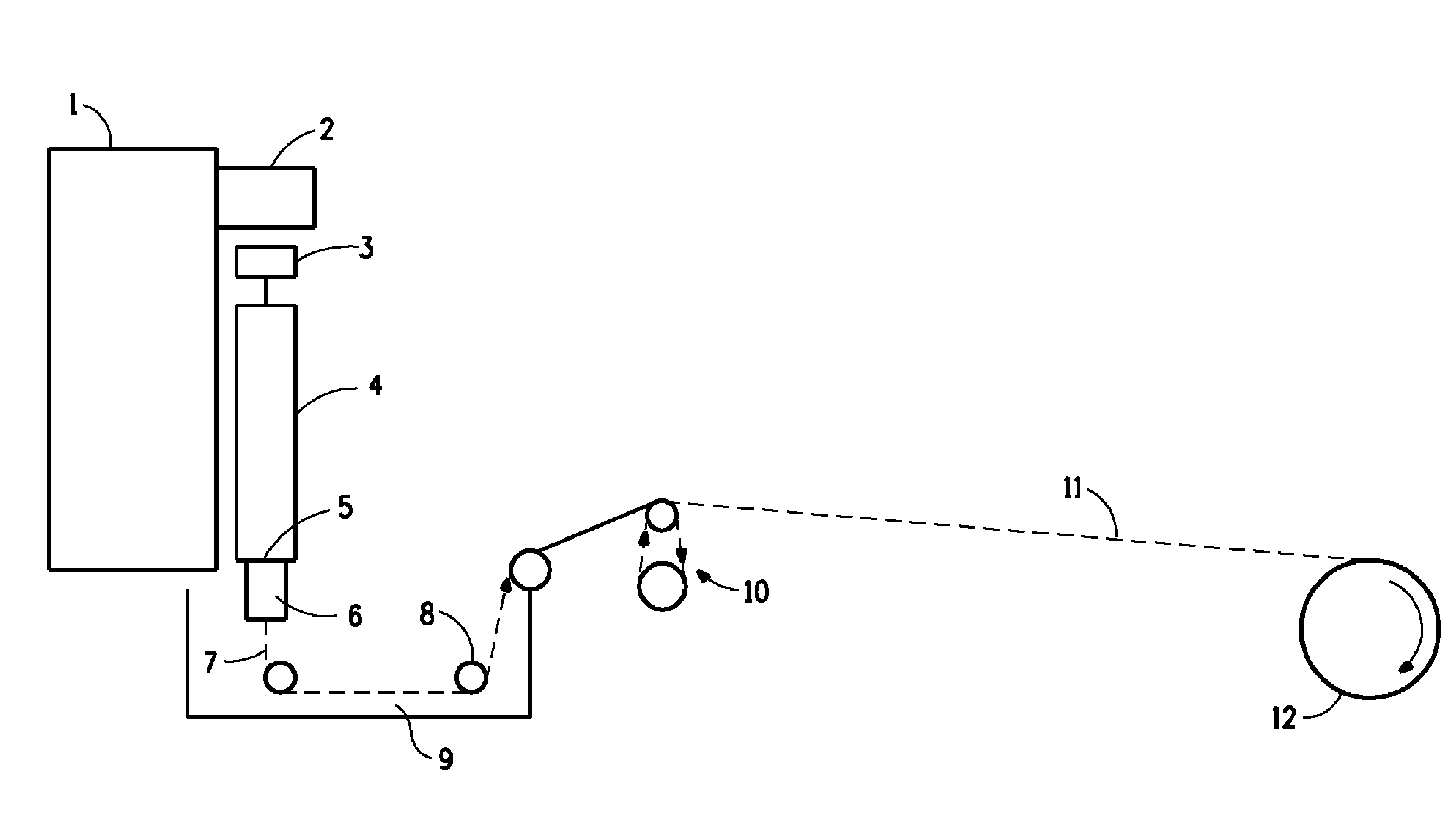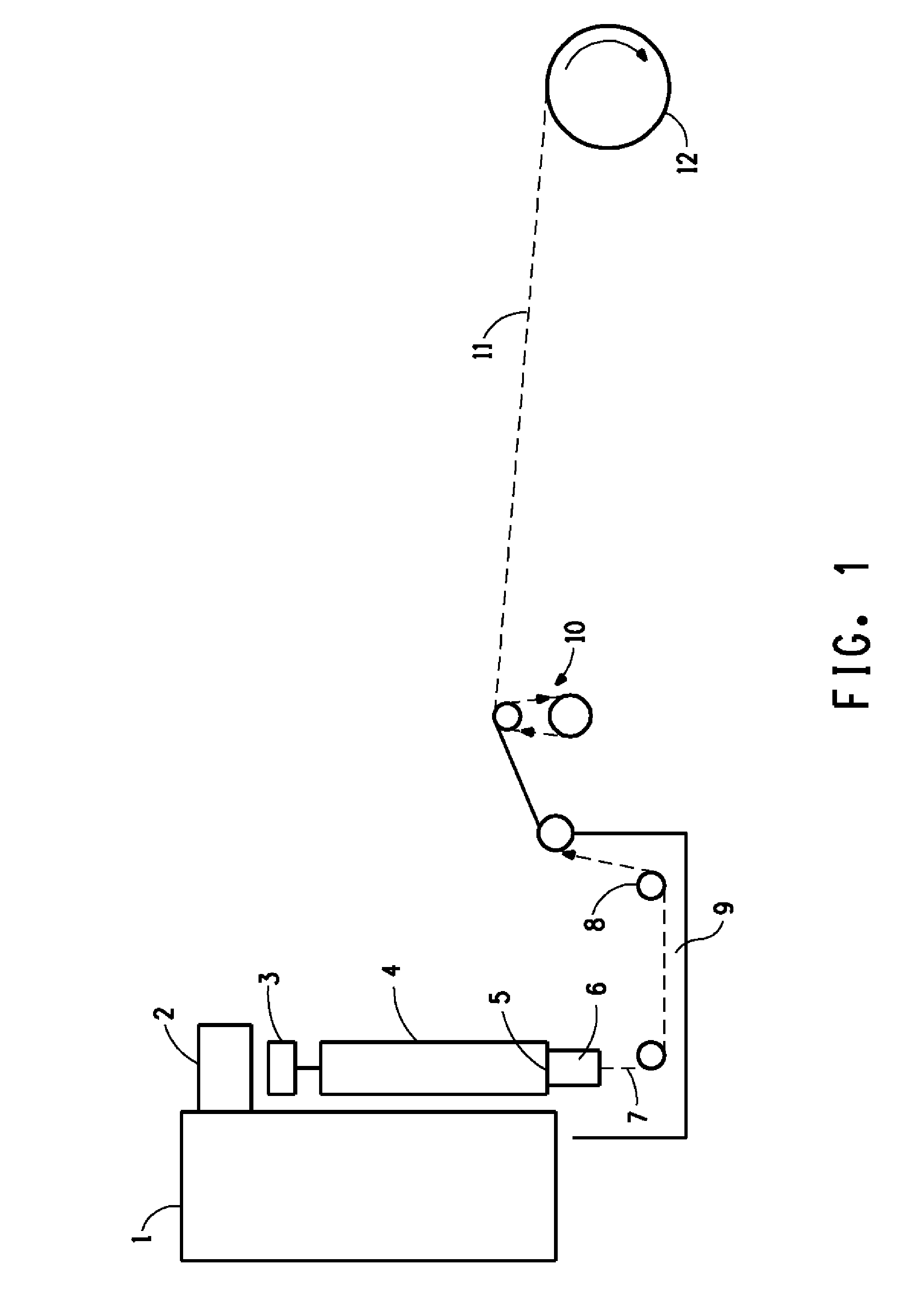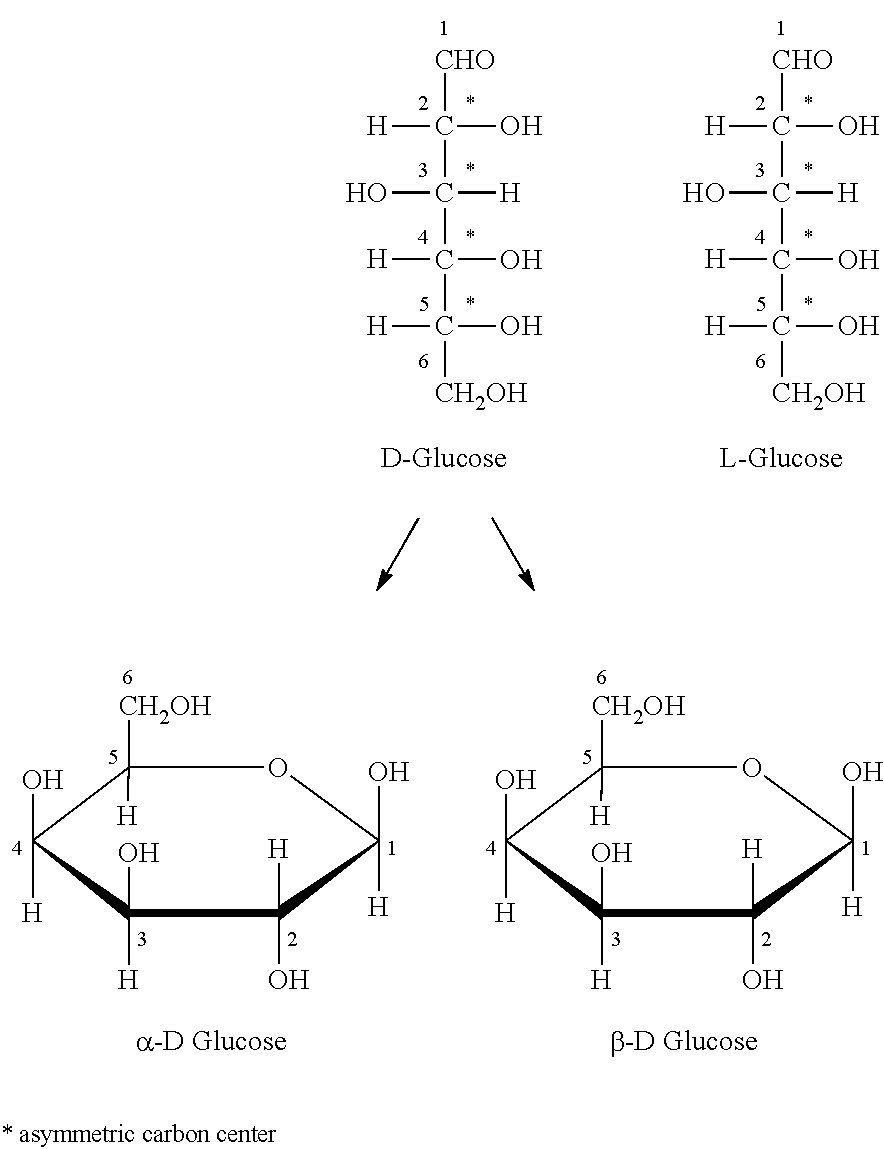Novel Composition for Preparing Polysaccharide Fibers
a technology of polysaccharide fibers and compositions, applied in the direction of sugar derivates, organic chemistry, chemistry apparatuses and processes, etc., can solve the problems of cotton evolution under constraints, chain cleavage and molecular weight loss, and concomitant degradation of mechanical properties
- Summary
- Abstract
- Description
- Claims
- Application Information
AI Technical Summary
Benefits of technology
Problems solved by technology
Method used
Image
Examples
examples
Materials
[0044]
MATERIALDescriptionVendorDialysis tubingSpectrapor 25225-226, 12000VWRmolecular weight cut-off(Radnor, PA).Sucrose15 wt-% solids aqueousVWR.solution (#BDH8029)DextranT-10 (#D9260)Sigma Aldrich.EthanolUndenatured (#459844)Sigma AldrichAntifoamSuppressor 7153Cognis Corporation(Cincinnati, OH).N-methylmorpholine NMMOSigma AldrichN Oxide
[0045]All other chemicals were obtained from commonly used suppliers of such chemicals.
Molecular Weights
[0046]Molecular weights were determined by size exclusion chromatography (SEC) with a GPCV / LS 2000™ (Waters Corporation, Milford, Mass.) chromatograph equipped with two Zorbax PSM Bimodal-s silica columns (Agilent, Wilmington, Del.), using DMAc from J. T Baker, Phillipsburg, N.J. with 3.0% LiCl (Aldrich, Milwaukee, Wis.) as the mobile phase. Samples were dissolved in DMAc with 5.0% LiCl. The degree of polymerization shown in Table 2 is based upon number average molecular weight.
Preparation of Glucosyltransferase (gtfJ) Enzyme
Seed Medium
[...
example 4
[0075]0.5 g of Polymer P2 was added to a mixture formed by combining of 8 g of a 50 / 50 by weight mixture of anhydrous NMMO and water with 0.15 ml of an aqueous solution of propyl gallate (0.08M) and hydroxylamine sulfate (0.026 M). The thus combined ingredients were charged to a 40 ml glass vial. After charging, the vial was capped with a silicone septum and the vial was weighed. The septum was then fitted with a stirring rod. The vial was placed into a heating block preheated to 110° C. and kept there for 30 minutes with occasional manual stirring. After 30 minutes, vacuum was applied while continuing to heat at 110° C. to remove water to the level shown in Table 2. Final water content was determined by weighing the amount that was distilled off. Distillation of NMMO was negligible. The polymer was fully dissolved and was light amber in color. Final solids content was 8.9%.
example 5
[0076]1.0 g of polymer P4 was suspended in 8.5 g of a 50 / 50 by weight mixture of anhydrous NMMO and water, to which was added 0.15 ml of an aqueous solution of propyl gallate (0.016M) and hydroxylamine sulfate (0.005 M). The ingredients were charged into a 40 ml glass vial fitted with a silicone septum. After charging the vial, its contents were weighed. A stirring rod was then inserted through the septum. The vial was then placed into a heating block preheated to 110° C. and held there for 60 minutes with occasional manual stirring. After 60 minutes, vacuum was applied while heating at 110° C. was continued, to remove water to the level shown Table 2. The polymer was fully dissolved and was light amber in color. Final solids content was 8.1 wt-%.
PUM
| Property | Measurement | Unit |
|---|---|---|
| Fraction | aaaaa | aaaaa |
| Percent by mass | aaaaa | aaaaa |
| Percent by mass | aaaaa | aaaaa |
Abstract
Description
Claims
Application Information
 Login to View More
Login to View More - R&D
- Intellectual Property
- Life Sciences
- Materials
- Tech Scout
- Unparalleled Data Quality
- Higher Quality Content
- 60% Fewer Hallucinations
Browse by: Latest US Patents, China's latest patents, Technical Efficacy Thesaurus, Application Domain, Technology Topic, Popular Technical Reports.
© 2025 PatSnap. All rights reserved.Legal|Privacy policy|Modern Slavery Act Transparency Statement|Sitemap|About US| Contact US: help@patsnap.com



